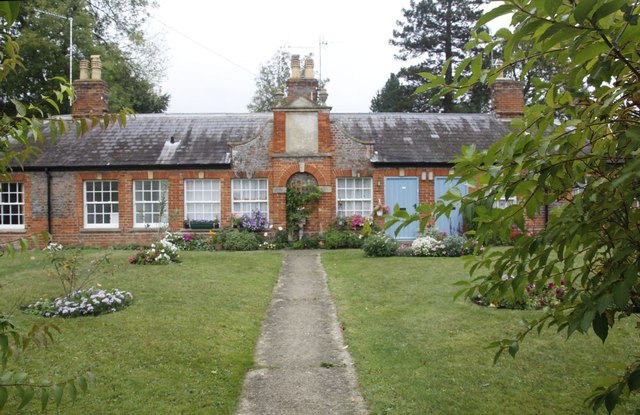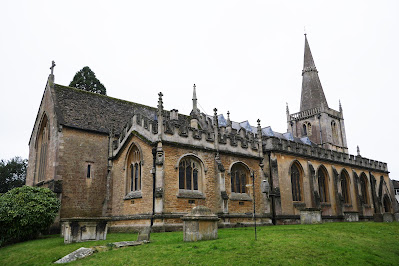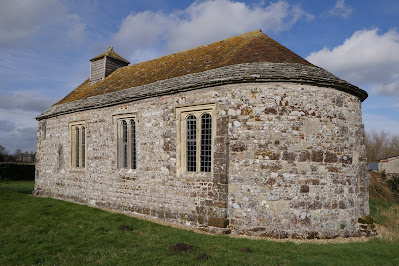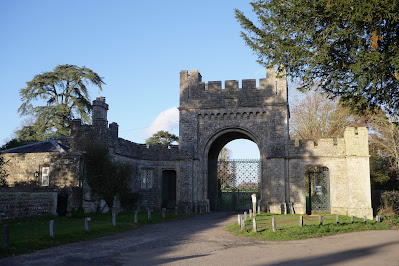The Yelde Hall, Chippenham
Another walk with my friend Merv, on a very grey day. I thought I would start this blog with a picture of the fine Yelde Hall (or Guildhall), built in the15th century. It was variously a meeting place for the Council, a public meeting room, a courthouse, a gaol and a Tourist office among other things. It seems unclear what it should be used for now.
We parked near the station and headed downhill to turn left at The Bridge. We were quite taken by the imposing building on the corner, for all that it looks rather run down.
We headed on into the High Street to reach the Town Hall. It was built in 1833 and enlarged in 1850. The extension, the Neeld Hall, is on the right and housed a corn exchange and Cheese Market. Now the Council's Customer Services occupies the ground floor and the remainder is a community and arts centre.
Coming into the Market Place we encountered the Butter Market (where milk and cheese were sold). It has a surprising history. The original Buttercross stood at
the current location of Barclays Bank. In 1889 it was sold and moved to
Castle Combe Manor House, where it was used as a garden gazebo. In 1995,
the Buttercross was re-erected in the town by Chippenham Civic Society. It looks well in its latest home.
Further into the Market Place is the imposing Angel Hotel.
A little further on we reached St Andrews Church, which Pevsner describes as "quite an impressive church", even though the upper parts of the tower date from 1633 and the interior was rebuilt in 1975-8.
Opposite the church are these buildings which we first took for almshouses. It is in fact a former church hall, now refurbished and renamed as King Alfred Hall.
At right angles with the hall, and beyond the church, is St Mary's Street has a succession of interesting buildings: in succession a Georgian mansion, a fine red brick and then "one of only two half-timbered houses in Chippenham worth mentioning" (Pevsner of course; the other house is not mentioned again).
We decided it was now time to walk to Lacock. So far as I could see from the OS map it was a relatively straight line from Chippenham to Lacock. I had got it into my head that the route involved a redundant railway line and all we had to do was to get off along the right path. This proved to be much more lengthy and difficult that we could have imagined but after several several false starts we walked across open land to pass the first definitive milestone: Rowden Manor.
We then had a struggle to find the right path past the Sewage Works, but eventually emerged on the right path to then skirt the Lackham Agricultural College. We passed an interesting WW2 pillar box - they are not usually square ...
... and carried on to reach the fine bridge at Raybridge.
But by now it was raining and when we reached the outsides of the village we sought the sanctuary of a pub. Later we walked along the wide street towards the Abbey.
We entered the Abbey precincts, passing the rather lovely archway. Lacock was founded in 1229 for Augustinian canonesses, led by a strong woman by the name of Ela, who became the first abbess and reigned until 1261. The Abbey was dissolved in 1539 and a little late the house passed to the Talbot family who kept it until1958. In the 19th century it was the location of W H Fox Talbot's pioneering work in photography.
Before going through the archway we looked at the large and rather picturesque courtyard ...
... and then passed the Great Hall, sadly closed on this day (no reason given).
We walked round the edge of the buildings and into the rather lovely cloister ...
... on the left is the impressive Chapter House.
We completed our visit by looking at the interesting exhibition of Fox Talbot's work. And then decided, that as it was raining, we would get a cab back to Chippenham rather than walk.
Map: Explorer 156 (Chippenham & Bradford-on-Avon.
Distance: The walk from Chippenham to Lacock was supposed to be 3 miles, but Merv's electronic route map suggested nearer 5.
Conditions: Grey and later wet.
Rating: four stars. Chippenham and Lacock were interesting and enjoyable.


















































